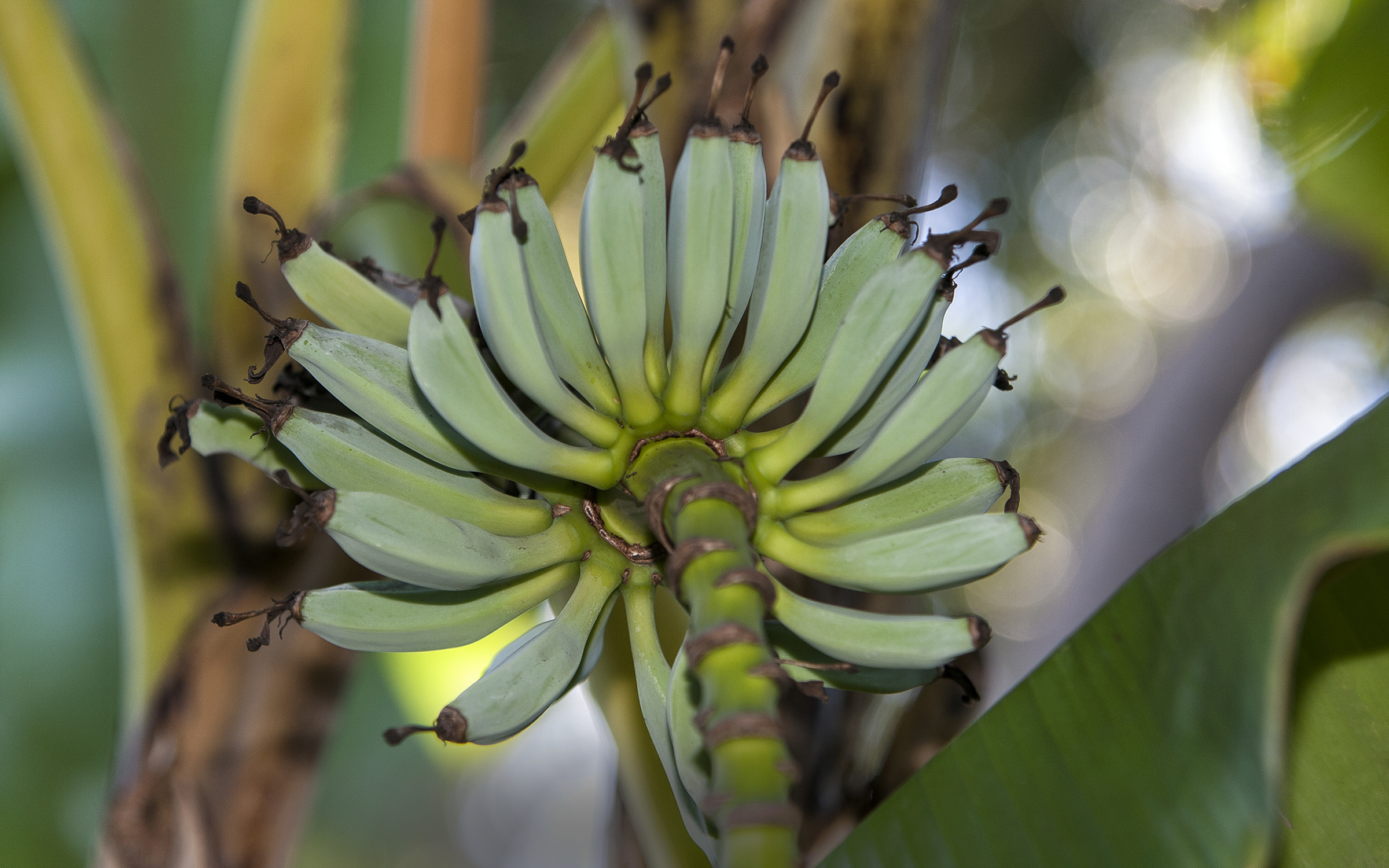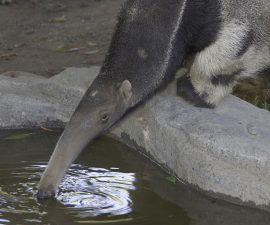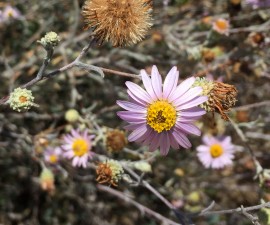Bananas do not grow on trees. It’s true! The plant’s long, broad leaves are supported by a single stout structure called a pseudostem, which only looks like a tree trunk. But banana plants are actually considered giant herbs. They are herbs that bear fruit—which means, botanically speaking, that the fruit is a berry. Intrigued? That’s just the beginning.
BY Wendy Perkins
Photography by Tammy Spratt
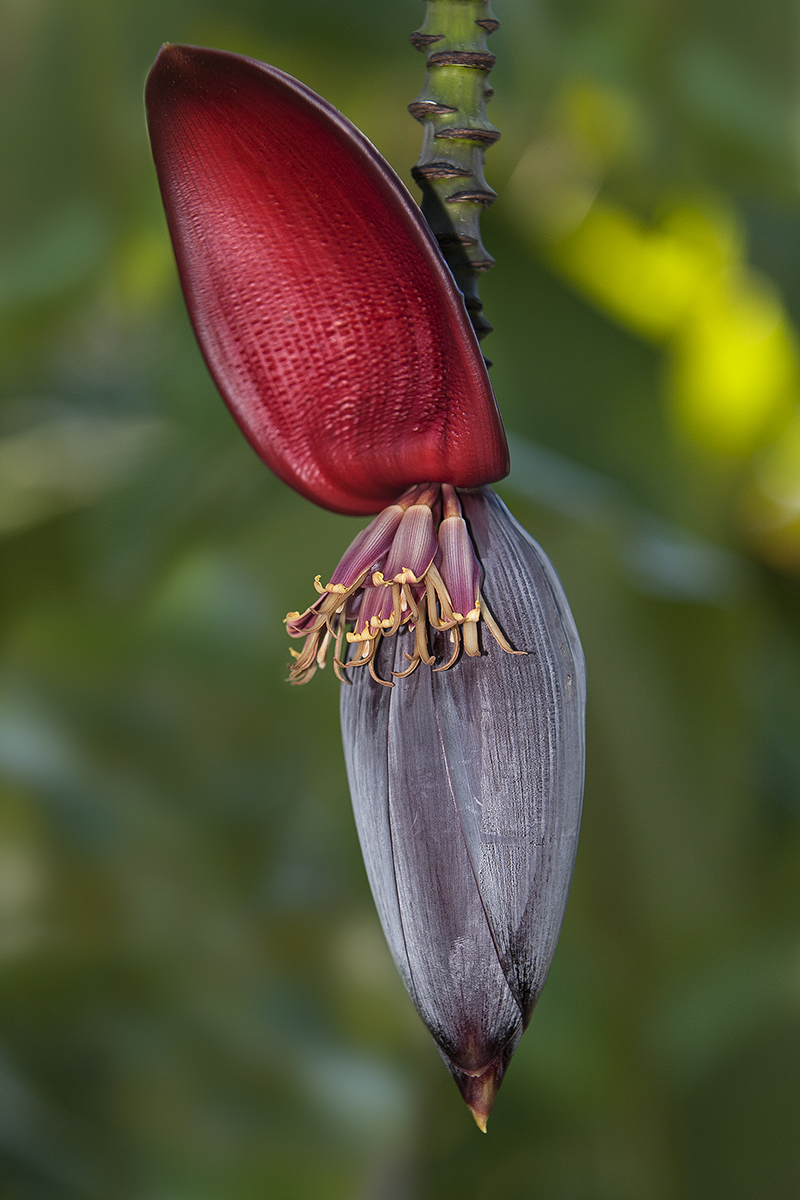
BANANA IN BLOOM
A banana plant’s inflorescence takes the form of a long stalk. Mature female blossoms become bananas. Maroon bracts of the terminal bud lift to reveal the male flowers.
Tropical and Ancient
Banana plants belong to the genus Musa. Wild bananas are found throughout Southeast Asia today, but they are mostly inedible to humans. Containing little fruit and many hard seeds, they are too much work for too little gain for Homo sapiens, but they are a boon to wildlife.
The bananas we eat are seedless. It is believed this mutation was first noticed and nurtured by humans in Southeast Asia circa 8,000 to 5,000 B.C.E. Archeological findings suggest humans in the Kuk Valley of New Guinea may have been the first to domesticate the plant. Other evidence suggests that spontaneous domestication may have also occurred soon after in other parts of Southeast Asia and the South Pacific. From there, domesticated Musa plants were carried across the tropics and cultivated over hundreds of years. As Musa spread, so did the diversity.
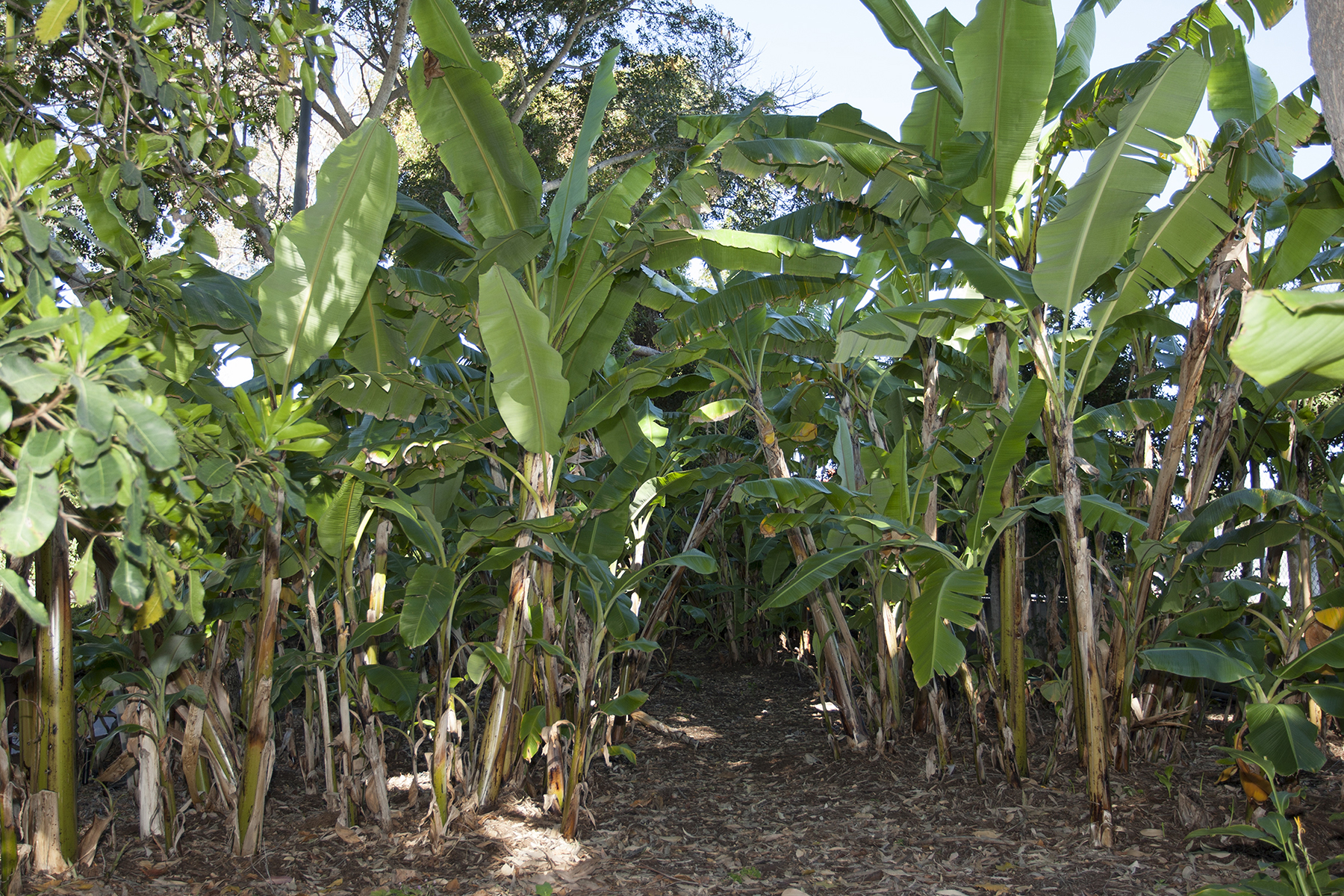
THE MORE, THE MERRIER
Domesticated bananas don’t contain seeds. They reproduce by sprouting new growth from the rhizome, resulting in dense clusters of plants.
Banana-copia
Asked to draw a banana, most people would sketch something resembling a curved cylinder narrowing to a point at both ends. That’s what is most commonly seen in the produce section—often our only exposure to the fruit. Yet among the well over 1,000 types of domesticated bananas, there exists a range of shapes and sizes. Some are round as a bowling ball, others long and straight. Certain types are short and thick, some are pear shaped, and a few look like nothing else—especially not the bananas we typically buy at the grocery store.
The names given to the plethora of banana varieties are often vividly descriptive: False Horn (long and straight); Praying Hands (pieces grow close together, sometimes even fused); Monkey Fingers (exceptionally long, slender, and slightly curved); and the astonishing Hapai (“pregnant” in Hawaiian) banana, so named because the fruit develops inside the trunk! An abundance of fruit flies and ants on the trunk of a Hapai banana plant is a sign that the fruit inside is ripe. To harvest the bananas, the farmer carefully cuts the central stalk open and pulls the fruit out.
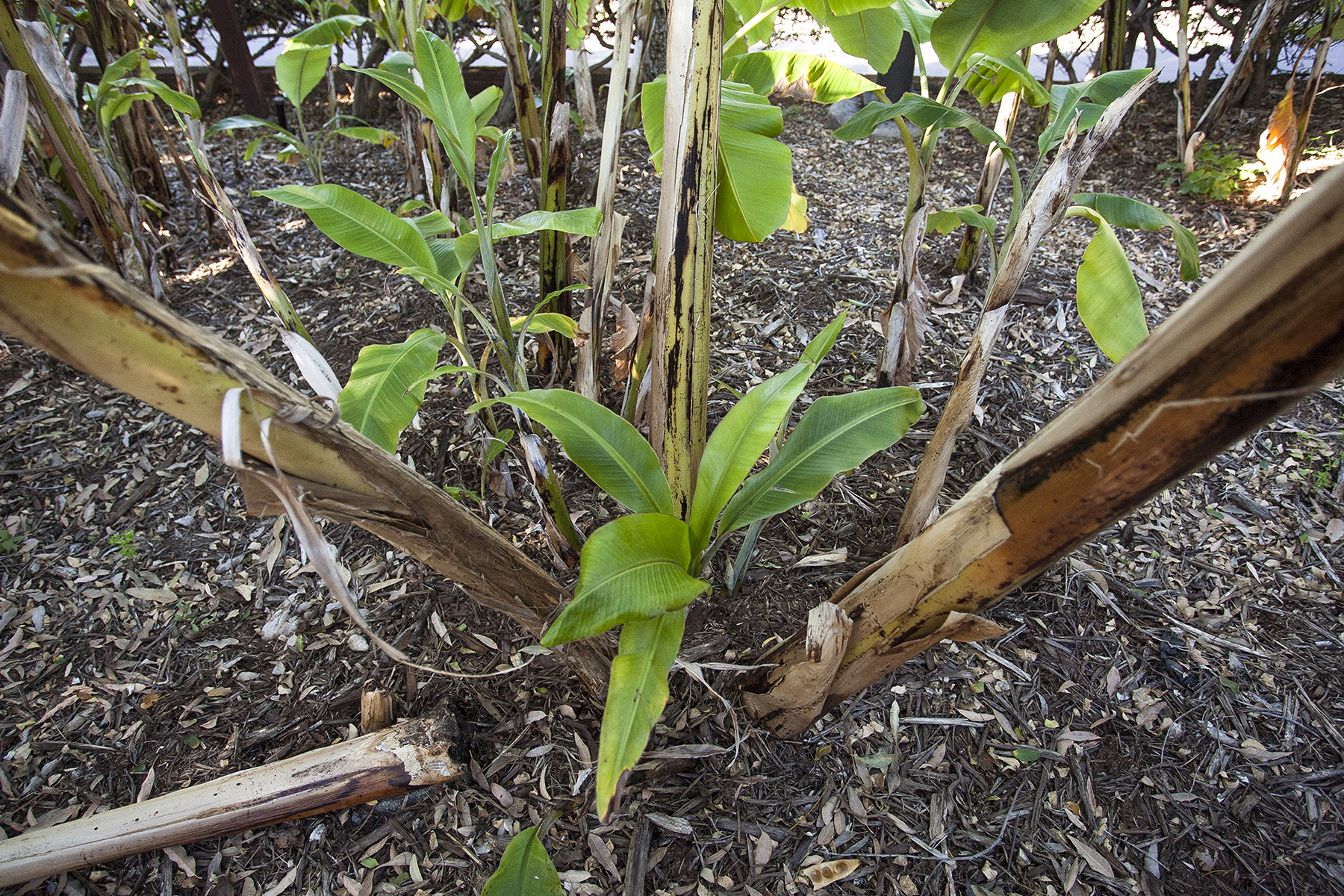
THE NEXT GENERATION
Sprouts called “pups” emerge from the rhizome beneath the soil surface.
Musa Speak
Around the world, different human cultures have developed their own Musa species. Some are called plantain instead of banana, and there is a noticeable difference between the two. Starchy plantains are cooked before being eaten. They have a low-moisture content (65 percent on average), contain little sugar, and are not good eaten raw. Bananas contain more moisture (83 percent on average) and a higher sugar content, which makes them delicious to humans when eaten raw.
Whether the subject is plantain or banana, there’s a simple lexicon for referencing the harvest—and most of us have been saying it wrong. A single banana is called a finger. About 20 fingers make up a “hand,” and multiple hands grow in a bunch, also known as a stalk. Depending on the variety, a bunch of bananas may contain 3 to 20 hands!
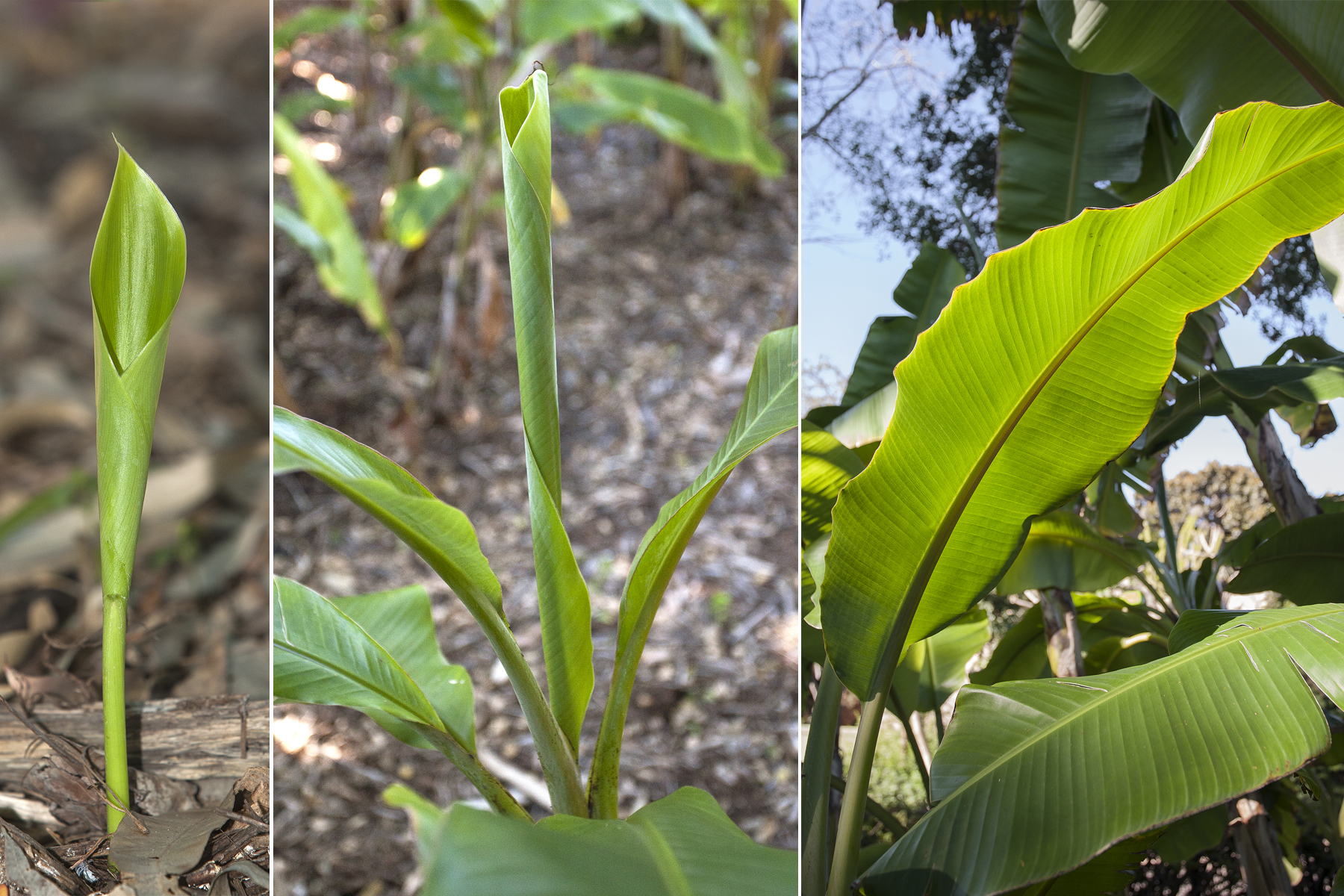
LEAFING OUT
From left: It begins with just one leaf…. Generally, a banana plant produces 40 leaves before fruiting; new banana leaves—called “cigar leaves” because of their tightly rolled shape—emerge one at a time from the center of the stalk; the veins in a banana leaf do not branch as in some other plants, making them tear easily when disturbed.
Home Grown
Being tropical, bananas require great quantities of water, heat, and rich humus-type fertilizers. In warm climates like those found in the southern US and many Mediterranean countries, growing bananas has become a popular pastime for gardening enthusiasts. New varieties pop up frequently, bred for the home garden market.
The San Diego Zoo cultivates 24 species of banana plants on its 100-acre grounds. The leaves and stalks are harvested and given to our primates and elephants as browse. The fruit sometimes supplements the commercial bananas purchased to feed many animals in the collection. In our Mediterranean climate, it takes a good 2 years to reach fruiting, whereas in the tropics it takes 12 to 14 months, depending on the variety.
The Zoo’s Musa collection not only provides nutrition and enrichment for the animals, it also adds to the beauty of the grounds. Clusters of stout trunks and long, broad, deep green leaves create a lush, tropical feel, and visitors can see what plant produces this favored fruit. For all these reasons, bananas are a truly appealing group of plants.

